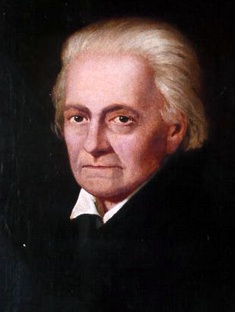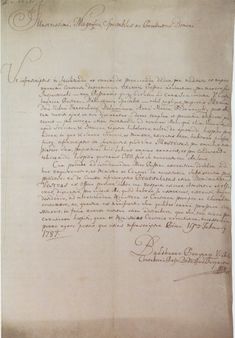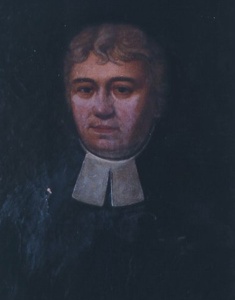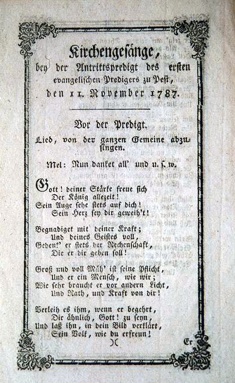|
During the first five years after the Edict of Tolerance was proclaimed, the long-awaited "first stones" of a church in the centre of Pest were still not laid. In this respect the first significant year was 1786. It was in September 1786 that János Sámuel Liedemann (15), a tradesman, who moved to Pest from an area called Szepesség in Northern Hungary, became the first Lutheran citizen of Pest. With the help of his citizen’s pass and using his respect he gradually had more and more decisive role in the life of the capital (later he became a member of the Metropolitan Council), and he also became a driving force for and a most enthusiastic financial supporter of the first Lutheran congregation in Pest.
December 8th 1786 however became an even more significant date. On this day the General Synod of the Lutheran Church, which gathered in Buda, adopted the following resolution: "Since the number of Lutherans is growing rapidly in Pest-Buda, and there is a high headcount of Lutheran youths at the University; there are many soldiers also following the Lutheran faith in the ranks of the army stationed locally, and in the absence of a Lutheran minister, all these persons lack religious education, the Synod hereby declares that a Lutheran Church is established in Pest-Buda. Pursuant to this resolution the Agent in Buda shall be instructed to take the necessary steps also partly by way of the Royal Hungarian Governing Council, and since the implementation will require high costs, the Agent shall issue an address to wealthy Lutheran gentlemen requesting them to allocate donations and, at the same time, the Agent shall also request that the High Military Authorities also advocate this cause."
Boldizsár Pongrácz, who has already been mentioned above, and who participated in the Synod, in his position as supervisor of the parish in Pest county, distributed an official collection form (16) as early as in February 1787. In the appendix of this form he noted that he had conducted negotiations with the widow of General Beleznay, who had indicated readiness for donating an annual amount of 300 Rhinal Forints for the upkeep of dwellings for a minister and a cantor, and for the establishment of a congregation hall until the church was completed. (Taking into consideration the conditions in those days, this amount of money was the equivalent of the price of 6 draught oxen, which would equal a donation of Euro 15,000 today). Some thirty wealthy Lutheran noblemen and citizens, who offered sums of various magnitudes, signed the collection form. In a short period of time 700 Rhinal Forints was collected, which would be the equivalent of Euro 40,000 today. In this way all the conditions were present for the implementation of the plans.
Every person concerned in this matter agreed that a minister, who was suitable in every respect, had to be recruited by the congregation by the time the permission for a public service arrived. Since no official parish presidium had been formulated then, it was Pongrácz again who took matters in hand, and set out to compose a wide range of correspondence. An excellent urban minister was considered, who was also the editor of the first Hungarian-language periodical, but he was rejected because it turned out that, if elected, he would refuse to wear the liturgic "alba" (the Slovakians insisted on this), and he would also refuse to bless the congregation with the cross. |

(15) János Sámuel Liedemann 
(16) Official collection form

(17) János Molnár
|
|
While making inquiries domestically and also abroad, Pongrácz and his helpers submitted their claim to the Governor’s Council in spring 1787. They wisely supported their claim with arguments to say that Protestant parents would be more willing to enrol their children to the
Pest University  if their religious claims were satisfied. It would also give impetus to the development of trade and industry, if Lutheran tradesmen and craftsmen settled in the capital knowing that besides guaranteeing their living they could also satisfy their spiritual claims. The claim submitted also contained the argument that if a church were built in Pest, the Lutheran members of the military personnel would not have to attend services in far-away Cinkota. The claimants also informed the Governor’s Council that the noblemen would bear all the financial burdens concerning the parish. if their religious claims were satisfied. It would also give impetus to the development of trade and industry, if Lutheran tradesmen and craftsmen settled in the capital knowing that besides guaranteeing their living they could also satisfy their spiritual claims. The claim submitted also contained the argument that if a church were built in Pest, the Lutheran members of the military personnel would not have to attend services in far-away Cinkota. The claimants also informed the Governor’s Council that the noblemen would bear all the financial burdens concerning the parish.
The decree sent by the Royal court was handed over to the Lutherans within three months. They were granted free practice of their religion regardless of the still missing 100 Lutheran families. For the time being they were permitted to conduct services in private houses only, and the minister to be elected was obliged to take care of the sick soldiers hospitalised in Pest and Buda free of charge. As well as establishing a position for a supervisor and a caretaker, a small "Particular Convent" was also elected. The most urgent task was to acquire a suitable hall for services. The congregation rented three rooms in a one-storey corner building close to the river Danube and to the houses owned by Beleznay. The rooms were situated above a restaurant named "Pléhkalap" (Tin Hat). They pulled down the partition walls, and converted the rooms into a congregation hall, and they also created dwellings for the minister beside the hall.
In a short period of time the congregation managed to elect a suitable minister. As recommended by the Radvánszky family, they elected János Molnár
(17), a renowned preacher, who was fluent in Hungarian, Slovakian and German. After a long period of time it was on 24th October 1787 that the Word of God was pronounced in a Lutheran congregation in Pest at the inauguration ceremony of the hall for prayers. A small altar was built at one end of the hall, and there was a stand for a pulpit beside it. As a positive example of religious tolerance, the priest of the inner town Catholic church provided a small, portable organ for the Lutheran congregation with the condition that they always gave it back to the Catholics for the annual Corpus Christi Procession. Mrs. Beleznay donated a gilded silver chalice
(18), a patena (21) (a small plate for the altar bread) and a wine jug (19-20) for the Holy Communion to the congregation. The believers chanted happily: „Gott Zebaoth! Dich angebeten vereint sich heute dieser Schar,
Die sonst zerstreut in zweyen Städten nur Herde ohne Hirten war.
Drum denke Pest und Ofen dran, was heut der HERR an uns gethan!”
Three weeks after this the minister, who arrived in Pest together with his family, was ceremonially inaugurated. The ceremony was ecumenical in that
József Bengraf  conductor of the inner-city parish church, composed a piece for the occasion, which was performed by a Catholic choir conducted by the composer, at the ceremony. The words of the song were written by Professor Werthes from Württemberg, whose name has already been mentioned before
(22). conductor of the inner-city parish church, composed a piece for the occasion, which was performed by a Catholic choir conducted by the composer, at the ceremony. The words of the song were written by Professor Werthes from Württemberg, whose name has already been mentioned before
(22).
The order of services was established as follows: There was a service in German every Sunday morning followed by one in Slovakian in the afternoon. Regarding the small Hungarian community, services in Hungarian were held occasionally. The minister gradually visited every member in the congregation. After 3 years he registered 13 baptisms, two burials and seven weddings in his register book. |

(22) Catholic songs |